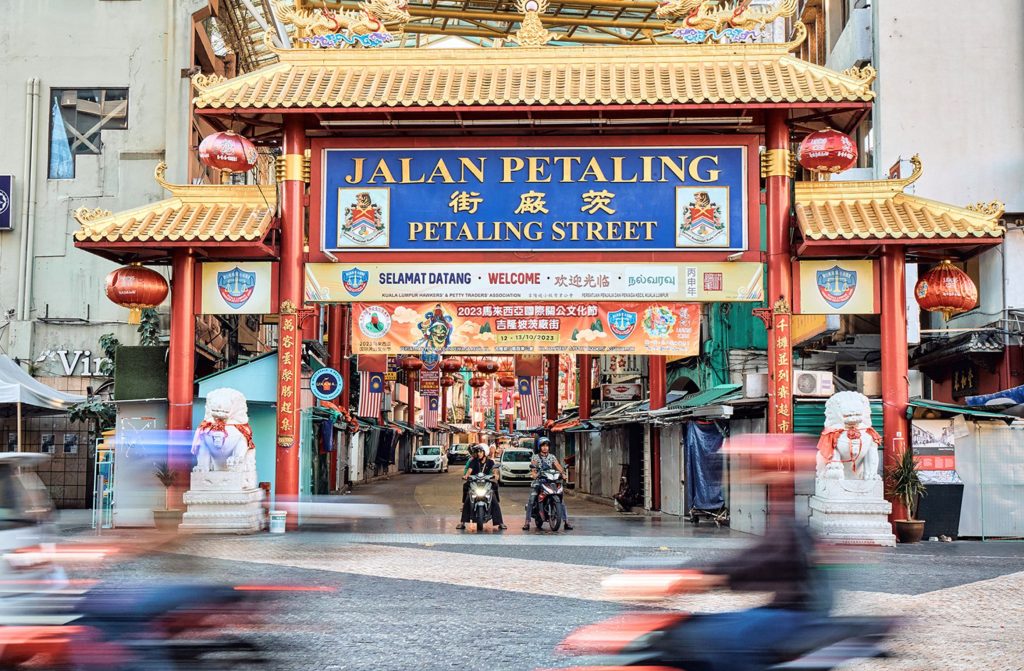Tackling the title at hand, you may have been stumbling upon street furniture advertising— in Malaysia, no less! Perchance, it didn’t occur to you that those were it. If so, let this article undrape questions on street furniture advertising in Malaysia, and of its significance valuing such outdoor advertising type, along with effective time examples being employed in Malaysia as a whole.
What Is Street Furniture Advertising?

First thing first, what is street furniture advertising?
Street furniture advertising applies to public structures such as bus stops and shelters, benches, kiosks, trash bins, and much more, these are aimed at exhibiting promotional advertising. By the same token, to achieve the targeted population these advertising are fixed in localities with tight traffic. In this manner, passing pedestrians, mobile motorists, and travelling transportation users can all be met.
In addition to this is that street furniture advertising is a form of outdoor— best known as, Out of Home (OOH) advertising. Striving for audiences whom stick out and about outside of their homes, often to commute, errands to run, groceries to shop, or otherwise to partake in outdoor activities. There are numerous builds to these advertisements, instances like posters, digital displays, interactive and immersive screens, and branded constructs planned into the designs of the street furniture itself.
Looking for a customised street furniture advertising in Malaysia?
Pop by Firstboard to let their specialists know!
Is Street Furniture Advertising Of Any Significance?
Here’s a good one, is there any importance as well as influence to street furniture advertising? Is there any in Malaysia at all? Let’s look into it!
1. A Prominent Profile & Presence
Say your street furniture advertising are situated in leading locations, inside of urban districts together with engaging environments. It is ensured that you provide high visibility and visuality to passing pedestrians and touring travellers. Therefore establishing exposure to all treasured places along with the products within a large populace.
Referred to as Jonker Street in the heart of Chinatown, Melaka, this is a street famed for its infinite shops, stores, and stalls be it of clothes, souvenirs, cultural food and beverages, on top of being the main street food hub. Its other spotlight is known as the night market that’s held on Saturdays and Sundays. The signature festive red is that of a cultural highlight, drawing in the visiting populace to its attractions, and settling itself a high profile and presence.
2. Trail Your Targeted Audience
It’s a given to have your street furniture advertising the capacities to trail your targeted audience, it is a strategic technique to allocate the whereabouts wanted as well as wandered by the mass public and so, enabling you to track down the specific demographics. Like the ‘where’ that is frequented by busying bodies of shoppers, transporting tourists, and familiar followers.
Looking at the 272 steps up to the Batu Caves, it is a grand Hindu temple site neighbouring Kuala Lumpur. The fresh repaint and renovation in varying colour palettes draws in influencers unlike before. It is a great mechanism to grab the minds of those knowledgeable about such National Heritage Site, including adventurers, sportspersons, historical scholars, and loyal disciples. A brilliant example of trailing your targeted audiences.
3. Extended Exposure To Your Brand
The fun thing about street furniture advertising is the extended exposure of its brands, unlike other forms of advertising that depend on short impressions, this grants a promising impression that can be stalled and stored instead. It is common to find pedestrians to spend their time waiting for transportations, or to stretch their legs, maybe to find shades by certain corners. This is where your brand has its spotlight!
This mural artwork is through a collaboration of KFC alongside with Kenji Chai, whose works are recognised here in Malaysia, and in other countries. There is a record of 3 KFC restaurants that is featuring each individual artwork and art style of their own on the walls. To illustrate the distinctive identities of Malaysia, each mural is therefore a piece of its own character, thus representing the parts played in defining KFC just as much as the brand is involved in their chapters.
4. Cost–Effective Expenses
If there’s anything to take into consideration, it’s this. The expenditures to broadcast your brand and or business can cost you a leg, or in the least, a tear into your wallet. Yet street furniture advertising as against other forms of advertising, digital out of home (DOOH) for instance, lands on much more reasonable prices instead. In turn, this offers a chance to advertise, advocate, and to achieve a rising reach on audiences except you are unloaded with the high production costs.
Onto the street where the heart of Malaysian local life is restless the most, the Petaling Street in Kuala Lumpur has a perfect presentation of a spirited street. By leveraging street furniture advertising into their businesses, the method is as cost–effective as it is clever. Thusly, with those extensive effects it can pull in both the locals as well as foreigners who visits a notable avenue as such.
5. Refining Local Relevance
Through fabricating your street furniture advertising with a touch of the local context together with culture to where it shall be planted in, it allows branded businesses the relevance they can find with their audiences. Hence, with the likeminded interests your supplies and or services reflect such connectedness between you and them.
Kampung Buatan Malaysia, ZUS Coffee orchestrated just as they organised this campaign event by utilising street furniture advertising of theirs. This approach showcased the truth to the qualities of Malaysian–made products, where each corner displays a local chronicle, authentic tell-tales to relate those dare to dream in unition with all Malaysians.
Is that curiosity about street furniture advertising, we see?
Into the book we go with Firstboard! For their specialists are here to help!
Image Credits: Brandavision, SYOK, iStock, BBC, QSR Brands, Hotels Combined, The Star